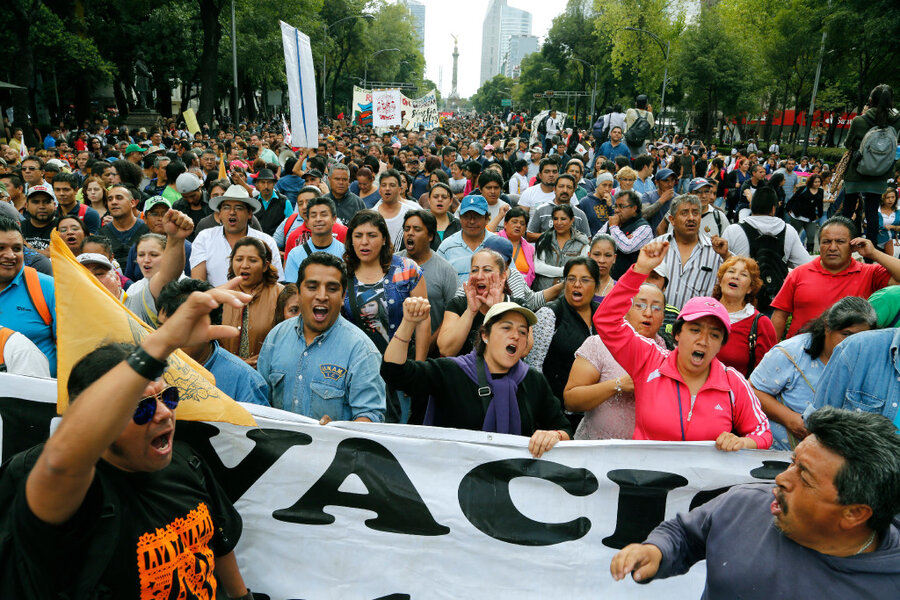Families of missing 43 students lead march in Mexico
Loading...
| Mexico City
The families of 43 missing Mexican college students led a march of unions, students and other supporters through the capital Monday to demand the young men be found on the second anniversary of their disappearance.
On Sept. 26, 2014, the students from the Rural Normal School at Ayotzinapa were in the southern city of Iguala hijacking buses. Local police intercepted them and turned them over to a local drug cartel.
The government's initial investigation decided the students were killed and incinerated in a fire, but international experts have cast doubt on this theory and the families have not accepted it.
"Our fight continues firm; we're still standing," said Clemente Rodriguez from Tixtla in the southern state of Guerrero, whose son Christian is among the missing.
Wearing a white shirt and pants and a straw hat, Rodriguez marched with other relatives of the missing at the front of the demonstration down Mexico City's central boulevard. "It's not easy to leave family (to march all over the country), but I have the conviction and the certainty that the boys are alive."
Felipe de la Cruz, a spokesman for the families, said the two years have been hard on relatives who have worked to maintain pressure on the government by demonstrating all over the world.
"There are illnesses, there is exhaustion, there psychological torment, day after day to sleep and wake to the same situation," he said.
The government's version has maintained that the burned remains were dumped in a nearby river. Only one bone fragment was positively linked to one of the students.
Last week, Alfredo Higuera, the special prosecutor on the case, said the federal Attorney General's Office planned to make a fifth forensic examination of the dump site in Cocula where the students were allegedly burned.
Authorities have so far arrested 128 people. Seventy of those, mostly police officers and alleged cartel members, are currently being prosecuted. A number of them have alleged torture by officials and it is unclear how that will affect their cases.
Experts sent by the Inter-American Human Rights Commission were highly critical of the government's investigation. The lead government investigator Tomas Zeron left the Attorney General's Office earlier this month, but was promptly given a national security position in the administration of President Enrique Pena Nieto.
Zeron's exit had been one of the main demands of the students' families.
The families' lawyers say that in recent months authorities finally began analyzing the cellphones of everyone who was in the area and are using technology that aids in seeing what is below the ground's surface in the search for hidden graves.
Pena Nieto on Monday, attending the signing of the peace accord in Colombia, said his government has the "firm commitment" to arrive at "the ultimate consequences of the investigation."







